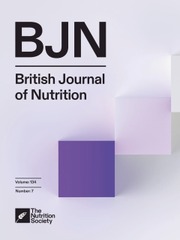No CrossRef data available.
Article contents
Plasma caffeine level as a protective factor against age-related eye diseases: a two-sample Mendelian randomization study
Published online by Cambridge University Press: 17 November 2025
Abstract
Traditional studies examining caffeine intake and age-related eye diseases (AREDs) have shown inconsistent results, potentially related to variations in caffeine assessment methods. This two-sample Mendelian randomization study investigated associations between plasma caffeine and four AREDs: senile cataract, diabetic retinopathy (DR), glaucoma, and age-related macular degeneration (AMD). Summary data on genetically predicted plasma caffeine came from a genome-wide association study of 9,876 European-ancestry participants across six population-based studies. ARED data were extracted from FinnGen Consortium clinical records. We further examined causal effects on glaucoma subtypes: primary open-angle glaucoma (POAG) and primary angle closure glaucoma (PACG), and assessed intraocular pressure (IOP) as a potential mediator. Higher genetically predicted plasma caffeine levels were associated with reduced risk of senile cataract (OR 0.84, 95% CI 0.78 to 0.90, P < 0.001), DR (OR 0.81, 95% CI 0.74 to 0.88, P < 0.001), glaucoma (OR 0.83, 95% CI 0.73 to 0.95, P = 0.008), and PACG (OR 0.74, 95% CI 0.54 to 0.99, P = 0.046). No associations were observed with AMD or POAG. Mediation analysis suggested that 41% (95% CI -0.14 to -0.01) of caffeine’s effect on glaucoma was mediated by IOP. Our findings indicate that elevated plasma caffeine may protect against senile cataract, DR, and glaucoma, but not AMD. Effects differed by glaucoma subtype, with IOP partially explaining the overall association. This study provides genetic evidence supporting caffeine’s role in mitigating ARED risk, highlighting its potential therapeutic implications.
Keywords
Information
- Type
- Research Article
- Information
- Copyright
- © The Author(s), 2025. Published by Cambridge University Press on behalf of The Nutrition Society

